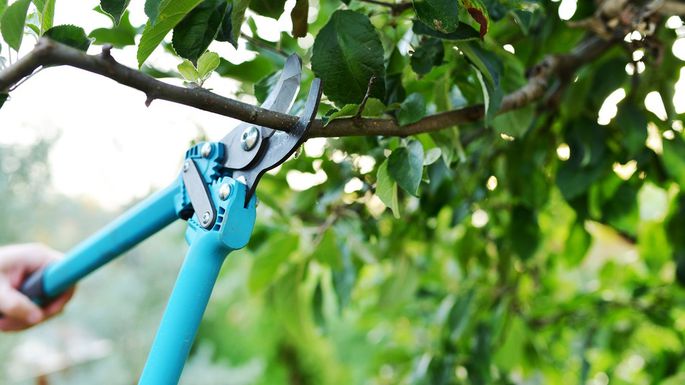We get a lot of questions at the Garden Center’s Plant Information Desk about when to trim what. So let’s help you take some of the mystery out of pruning.
First things first. Make sure that you have the proper tools for specific jobs and that they’re sharp and in good working order. Bypass hand pruners and secateurs are best for branches that are ¾-inch or less in diameter. If the branches are bigger, up to 2 inches, it’s time to go for loppers. The longer handles give you greater leverage for added cutting power. When the branches are larger than 2 inches, break out your pruning saw. Most have deeper teeth to cut efficiently into green wood.
We’ll say it again. Your tools should be sharp. Sharp blades make smooth cuts that promote healing. Dull blades tear at the plant tissue, leaving jagged edges that harbor disease and insects. You should hone them annually and if the blades are nicked or chipped, replace the blade or the tool.
What can you prune when? Early spring blooming trees and shrubs, like Lilac, Forsythia and Crabapple bear their flowers on buds formed last summer. The best time to prune any plants that bloom before June 1st is in the late spring, immediately after they have flowered. Pruning them later in the summer, or while they are dormant, removes flower buds.
Plants that bloom after July 1st are called summer bloomers and include Potentilla, Spirea and Roses. These plants produce their flowers on the current season’s growth. You can prune them in the winter when they’re dormant or in early spring after new buds begin to emerge. Many of these plants can be cut back drastically, almost to the ground, and they will still bloom that same summer.
Most evergreen plants with needles or scale-like foliage are best pruned early in their growing season. Pine can be pruned as the needles begin to develop. Snipping theses candles can reduce growth to a crawl. Spruce, Arborvitae and Juniper should be trimmed when the soft new growth begins to stiffen and darken in color. Avoid cutting back into wood that has no needles as these bare branches will not develop new growth. Shade tolerant evergreens, like Yews and Hemlock, are a more forgiving as that bare growth can sprout new shoots. Broadleaf evergreens grow so slowly that they require little trimming. If you need to prune Rhododendron, Holly and Boxwood, the best time is in mid spring as they are putting on their growth spurt.
What should be removed? Look at your plants. A good place to start is to remove dead, diseased or damaged stems. And when there is a disease issue, it’s a good idea to spray the blades with a disinfectant between cuts. Prune out any crossing branches, those vigorous, upright-growing shoots called water sprouts and any suckers from the roots. If plants are overgrown, thin them a bit by taking out 20% of the oldest branches. Once this pruning housekeeping is complete, you can trim for shape, making sure that you step back often to look at your work. This periodic admiration will prevent you from scalping your plants when all they need is a haircut.
And when you’re finished, wipe the blades clean of debris. Spray them with a lubricant and store in a dry place. You’ll need them in good working order again.

